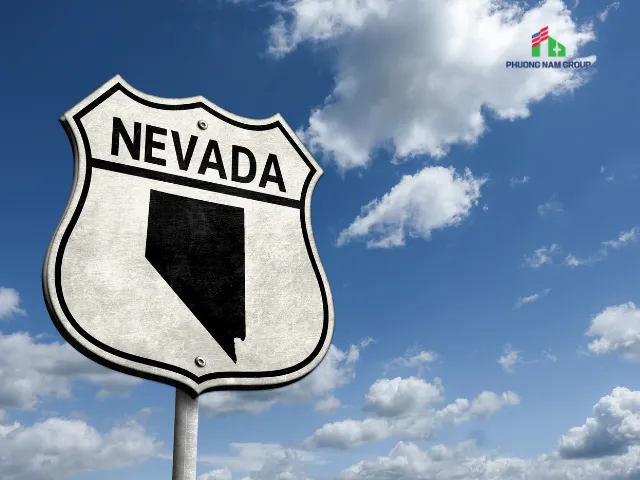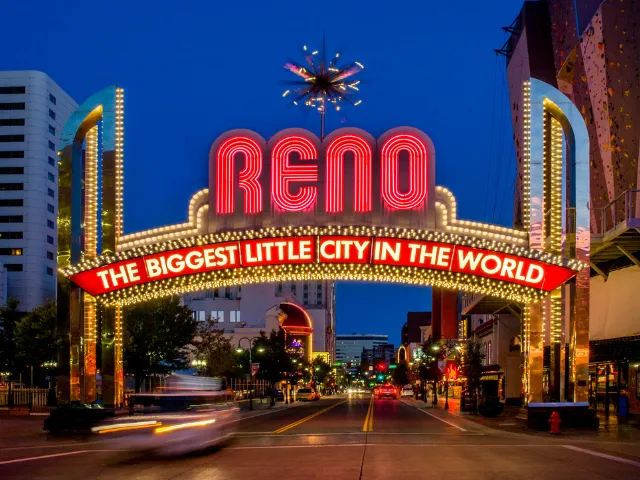Have you ever imagined waking up in the vast, silent space of the desert, watching the brilliant sunrise paint the rolling sand dunes pink? A camping trip in the Nevada desert can turn that dream into reality. However, for a safe and memorable trip, you need careful preparation and a grasp of important information. This article will provide everything you need to know to conquer the Nevada desert with an unforgettable camping adventure.
1. Why Camp in the Nevada Desert?
The Nevada desert is not just barren sand dunes but also a unique ecosystem with wild, majestic beauty. Camping here offers once-in-a-lifetime experiences:
- Stargazing: With a clear night sky, free from light pollution, you’ll witness thousands of twinkling stars, creating a stunning natural spectacle.
- Explore Wild Nature: Nevada is home to many unique desert flora and fauna such as jackrabbits, rattlesnakes, Joshua trees, and more. You have the chance to observe them in their natural habitat.
- Experience Tranquility: Away from the hustle and bustle of the city, you’ll find absolute peace in the vastness of the desert.
- Challenge Yourself: Desert camping requires careful preparation and adaptability to harsh conditions, helping you develop self-reliance and survival skills.

2. Choosing a Campsite Location
Nevada has many desert areas that allow camping, each with its own beauty and characteristics. Here are a few suggestions:
- Red Rock Canyon National Conservation Area: Located near Las Vegas, this conservation area is famous for its vibrant red sandstone cliffs, creating a majestic landscape. You can camp at designated campgrounds or obtain a permit for backcountry camping.
- Valley of Fire State Park: This park is known for its bizarrely shaped sandstone formations, formed millions of years ago. The Atlatl Rock Campground has amenities such as restrooms, water faucets, and picnic tables.
- Great Basin National Park: Located in eastern Nevada, this park has diverse terrain from desert to high mountains. You can camp at campgrounds within the park or backcountry camp after obtaining a permit.
- Death Valley National Park: Although most of this park is in California, a small part is in Nevada. Death Valley is one of the hottest and driest places on Earth, but it also possesses a harsh, captivating beauty.
When choosing a campsite location, consider factors such as:
- Amenities: Does the campsite have restrooms, water faucets, picnic tables, trash cans, etc.?
- Terrain: Is the terrain flat and easy to pitch a tent? Is there natural shade?
- Scenery: Is the scenery beautiful and does it suit your preferences?
- Regulations: Is camping allowed in that area? Is a permit required?

3. Packing Essentials and Gear
Desert camping requires more thorough preparation than camping in other places. Here is a list of essential items:
- Tent: Choose a sturdy tent that is wind and sand resistant.
- Sleeping Bag: Choose a sleeping bag suitable for desert nighttime temperatures, which are often very cold.
- Sleeping Pad: A sleeping pad helps you sleep better and insulates you from the cold ground.
- Drinking Water: Bring enough drinking water for the entire trip, at least 4 liters per person per day.
- Food: Choose dry, easy-to-store, and energy-rich foods such as bread, jerky, nuts, etc.
- Stove and Cooking Utensils: If you want to cook, bring a mini gas stove, pot, pan, knife, spoon, chopsticks, etc.
- Clothing: Bring long-sleeved clothing, a wide-brimmed hat, and sunglasses to protect your skin from the sun.
- Sunscreen: Use high SPF sunscreen to protect your skin from harmful UV rays.
- Medications: Bring personal medications and basic medications such as pain relievers, diarrhea medicine, bandages, etc.
- Flashlight or Headlamp: A flashlight or headlamp is essential for moving around in the dark.
- Map and Compass: A map and compass help you navigate in the desert, especially if you are hiking.
- First-Aid Kit: Bring a complete first-aid kit to treat minor injuries.
- Camping Permit (if required): Check if the area you want to camp in requires a permit and obtain one before you go.
- Power Bank or Portable Charger: To ensure your electronic devices are always working.
4. Safety First
Safety is always the most important factor when camping in the desert. Keep the following in mind:
- Inform Relatives or Friends About Your Plans: Let them know where you are going, when you will return, and contact them regularly.
- Check the Weather Before You Go: Avoid camping when there is a forecast of sandstorms, heavy rain, or extreme heat.
- Drink Enough Water: Drink water frequently to avoid dehydration, especially in hot weather.
- Avoid Hiking Alone: Always go with at least one other person to ensure safety.
- Be Careful of Wildlife: Do not approach or feed wild animals.
- Know How to Use a Map and Compass: If you are hiking, bring a map and compass and know how to use them.
- Bring a Cell Phone: A cell phone can help you contact others in case of emergency, but remember that not all areas in the desert have cell service.
- Learn to Recognize the Signs of Heat Exhaustion and Heatstroke: If you feel dizzy, nauseous, or have a headache, find a cool place to rest and drink water.
- Clean Up Before You Leave: Take all your trash with you and leave no trace.

5. Other Notes
- The best time to camp in the Nevada desert is in spring or fall: The weather is cooler and more pleasant than the hot summer and cold winter.
- Respect Nature and the Environment: Do not damage plants, litter, or make loud noises.
- Learn About the Culture and History of the Area You Visit: This will help you better understand the land and have more meaningful experiences.
- If You Are a Beginner, Join a Guided Camping Tour: This will help you become familiar with the necessary skills and knowledge for desert camping.
Conclusion
Camping in the Nevada desert is a wonderful experience, giving you the opportunity to explore the wild, majestic beauty of nature and challenge yourself. With careful preparation and a spirit of adventure, you will have a memorable and meaningful trip. Remember to follow safety rules and protect the environment to make your camping trip even more complete. Have a fun journey of exploring the Nevada desert!